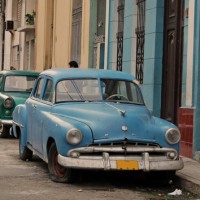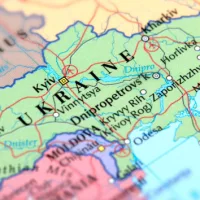
 iStock/Thinkstock(HAVANA) — The first scheduled U.S. commercial flight to Cuba in more than 50 years takes off this week.
iStock/Thinkstock(HAVANA) — The first scheduled U.S. commercial flight to Cuba in more than 50 years takes off this week.
The JetBlue flight from Ft. Lauderdale, Florida, to Santa Clara, Cuba, departs Wednesday morning. The new flights make it easier than ever to get to the Communist-run island.
Here is everything you need to know about making the trip.
How Do I Get There?
Book a flight or take a cruise.
JetBlue will eventually offer seven daily flights between the two countries.
Overall, 90 daily round-trip flights will pick up slowly over the next few months to nine different Cuban cities, for which six U.S. airlines were initially approved. American Airlines, which has facilitated charter flights to Cuba for years, begins its scheduled service Sept. 7.
And while dates for the start of the 20-daily round-trip flights from the United States to Havana have yet to be set, the U.S. government has now approved 10 total airlines for those flights, but Cuba must sign off.
Charter service is also still available, so if you have your heart set on the capital city, you can still fly there directly. It just may cost more.
After all the approvals are in place, 10 U.S. airlines will travel to 10 Cuban cities from 13 U.S. cities.
But if flying isn’t your thing, cruise on over to the island, only 90 miles away from Florida.
Carnival Cruise Line launched its first trip to the island earlier this summer. Fathom cruise line’s seven-day trips take you to Havana, Cienfuegos and Santiago de Cuba.
And ferry service is also in the works, meaning travelers would be able to make the quick hop from Florida for day trips.
Can I Go as a Tourist?
No, you still cannot travel to Cuba as a tourist. That means no “sun-and-sand” vacations to those white sand beaches.
In order to go to Cuba, you must verify that you meet one of the 12 pre-approved categories allowed by the U.S. government. This includes family visits and research, journalistic, religious or educational activities.
The most common form of travel is “people-to people.” That is a term for cultural exchanges: meeting the Cuban people in their everyday life, seeing schools or community projects and museums, maybe even take in a favorite Cuban (and American) pastime, baseball. But you must keep records of your activities while there.
You used to have to do this as part of a tour group, but President Obama changed that requirement earlier this year. And pre-approval is no longer necessary from the U.S. government.
“That’s why we’re encouraging travel — which will build bridges between our people, and bring more revenue to those Cuban small businesses,” Obama said while traveling in Cuba earlier this year.
Do I Need a Visa?
You do need a Cuban visa to visit. But Cuba does not issue visas that match perfectly the requirements of the 12-categories approved by the U.S. government for travel.
That means if you are traveling for a “people-to-people” cultural exchange, you would still get a tourist visa from Cuba.
The Cuban government issues five main types of visas — family, press, business, tourist and “other” — that include student or event visas.
If you travel via air and fall into one of the categories for a Cuban Tourist Visa, like a “people-to-people” trip, airlines are making it possible to purchase directly from them at the airport. Such requests don’t need to be made in advance and you can work through the charter companies or airlines, the Cuban embassy told ABC News.
It is best to check with your airline or cruise ship, though, and make sure they will provide this at time of booking.
Where Do I Stay?
Cuba has roughly 60,000 hotel rooms, which is below the number of visitors they host.
Starwood announced a deal earlier this year to become the first U.S. hotel chain to operate on the island in decades. Their first Havana location, Four Points by Sheraton, opened in June at the former site of the Hotel Quinta Avenida in the Miramar District.
Starwood plans to convert two other Cuban hotels into its property brands.
Another popular option is to stay at what is known as “Casa Particulares,” which are similar to a bed and breakfast.
Airbnb has partnered with many home owners as a way to make it easier for Americans — and other travelers — to book stays on the island.
Tourism in Cuba is still growing; a nearly 12 percent increase in the first half of 2016 when compared to the same time last year.
What About the Embargo?
That is still in effect, and don’t expect it to go away anytime soon.
Obama called on Congress to lift the embargo when he was in Cuba earlier this year, going so far as to say, “The embargo’s going to end. When, I can’t be entirely sure.”
And “when” still remains the big question.
Can I Bring Back Cigars?
Yeah, we know! You just want to go to Cuba to try those famous cigars and rum. And while in Cuba enjoy it. But what you can bring back still faces limits.
You can only return “with up to $100 worth of alcohol or tobacco or a combination of both,” according to U.S. Customs and Border Protection (CBP)
You can bring back other mementos from your trip but no more than $400, according to CBP.
Don’t Forget Your Cash
Major credit cards like Amex and MasterCard are approved for use in Cuba. But that doesn’t mean you should plan on using them. Most Cuban businesses aren’t prepared or set up to accept them.
The U.S. Embassy reminds all citizens traveling to “arrive with enough cash to last you through the end of your trip.”
Copyright © 2016, ABC Radio. All rights reserved.















